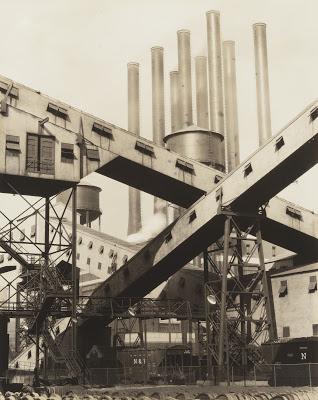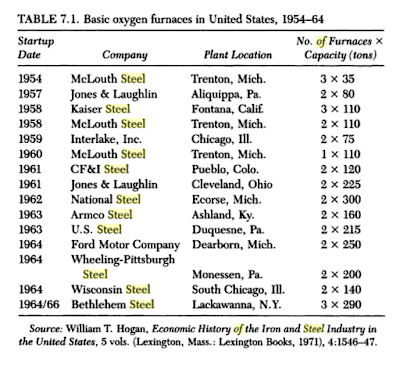
A recurring theme in recent months in Understanding Society is organizational dysfunction and the organizational causes of technology failure. Helmut Anheier's volume When Things Go Wrong: Organizational Failures and Breakdowns is highly relevant to this topic, and it makes for very interesting reading. The volume includes contributions by a number of leading scholars in the sociology of organizations.
And yet the volume seems to miss the mark in some important ways. For one thing, it is unduly focused on the question of "mortality" of firms and other organizations. Bankruptcy and organizational death are frequent synonyms for "failure" here. This frame is evident in the summary the introduction offers of existing approaches in the field: organizational aspects, political aspects, cognitive aspects, and structural aspects. All bring us back to the causes of extinction and bankruptcy in a business organization. Further, the approach highlights the importance of internal conflict within an organization as a source of eventual failure. But it gives no insight into the internal structure and workings of the organization itself, the ways in which behavior and internal structure function to systematically produce certain kinds of outcomes that we can identify as dysfunctional.
Significantly, however, dysfunction does not routinely lead to death of a firm. (Seibel's contribution in the volume raises this possibility, which Seibel refers to as "successful failures"). This is a familiar observation from political science: what looks dysfunctional from the outside may be perfectly well tuned to a different set of interests (for example, in Robert Bates's account of pricing boards in Africa in Markets and States in Tropical Africa: The Political Basis of Agricultural Policies). In their introduction to this volume Anheier and Moulton refer to this possibility as a direction for future research: "successful for whom, a failure for whom?" (14).
The volume tends to look at success and failure in terms of profitability and the satisfaction of stakeholders. But we can define dysfunction in a more granular way by linking characteristics of performance to the perceived "purposes and goals" of the organization. A regulatory agency exists in order to effectively project the health and safety of the public. In this kind of case, failure is any outcome in which the agency flagrantly and avoidably fails to prevent a serious harm -- release of radioactive material, contamination of food, a building fire resulting from defects that should have been detected by inspection. If it fails to do so as well as it might then it is dysfunctional.
Why do dysfunctions persist in organizations? It is possible to identify several possible causes. The first is that a dysfunction from one point of view may well be a desirable feature from another point of view. The lack of an authoritative safety officer in a chemical plant may be thought to be dysfunctional if we are thinking about the safety of workers and the public as a primary goal of the plant (link). But if profitability and cost-savings are the primary goals from the point of view of the stakeholders, then the cost-benefit analysis may favor the lack of the safety officer.
Second, there may be internal failures within an organization that are beyond the reach of any executive or manager who might want to correct them. The complexity and loose-coupling of large organizations militate against house cleaning on a large scale.
Third, there may be powerful factions within an organization for whom the "dysfunctional" feature is an important component of their own set of purposes and goals. Fligstein and McAdam argue for this kind of disaggregation with their theory of strategic action fields (link). By disaggregating purposes and goals to the various actors who figure in the life cycle of the organization – founders, stakeholders, executives, managers, experts, frontline workers, labor organizers – it is possible to see the organization as a whole as simply the aggregation of the multiple actions and purposes of the actors within and adjacent to the organization. This aggregation does not imply that the organization is carefully adjusted to serve the public good or to maximize efficiency or to protect the health and safety of the public. Rather, it suggests that the resultant organizational structure serves the interests of the various actors to the fullest extent each actor is able to manage.
Consider the account offered by Thomas Misa of the decline of the steel industry in the United States in the first part of the twentieth century in A Nation of Steel: The Making of Modern America, 1865-1925. Misa's account seems to point to a massive dysfunction in the steel corporations of the inter-war period, a deliberate and sustained failure to invest in research on new steel technologies in metallurgy and production. Misa argues that the great steel corporations -- US Steel in particular -- failed to remain competitive in their industry in the early years of the twentieth century because management persistently pursued short-term profits and financial advantage for the company through domination of the market at the expense of research and development. It relied on market domination instead of research and development for its source of revenue and profits.
In short, U.S. Steel was big but not illegal. Its price leadership resulted from its complete dominance in the core markets for steel.... Indeed, many steelmakers had grown comfortable with U.S. Steel's overriding policy of price and technical stability, which permitted them to create or develop markets where the combine chose not to compete, and they testified to the court in favor of the combine. The real price of stability ... was the stifling of technological innovation. (255)The result was that the modernized steel industries in Europe leap-frogged the previous US advantage and eventually led to unviable production technology in the United States.
At the periphery of the newest and most promising alloy steels, dismissive of continuous-sheet rolling, actively hostile to new structural shapes, a price leader but not a technical leader: this was U.S. Steel. What was the company doing with technological innovation? (257)Misa is interested in arriving at a better way of understanding the imperatives leading to technical change -- better than neoclassical economics and labor history. His solution highlights the changing relationships that developed between industrial consumers and producers in the steel industry.
We now possess a series of powerful insights into the dynamics of technology and social change. Together, these insights offer the realistic promise of being better able, if we choose, to modulate the complex process of technical change. We can now locate the range of sites for technical decision making, including private companies, trade organizations, engineering societies, and government agencies. We can suggest a typology of user-producer interactions, including centralized, multicentered, decentralized, and direct-consumer interactions, that will enable certain kinds of actions while constraining others. We can even suggest a range of activities that are likely to effect technical change, including standards setting, building and zoning codes, and government procurement. Furthermore, we can also suggest a range of strategies by which citizens supposedly on the "outside" may be able to influence decisions supposedly made on the "inside" about technical change, including credibility pressure, forced technology choice, and regulatory issues. (277-278)In fact Misa places the dynamic of relationship between producer and large consumer at the center of the imperatives towards technological innovation:
In retrospect, what was wrong with U.S. Steel was not its size or even its market power but its policy of isolating itself from the new demands from users that might have spurred technical change. The resulting technological torpidity that doomed the industry was not primarily a matter of industrial concentration, outrageous behavior on the part of white- and blue-collar employees, or even dysfunctional relations among management, labor, and government. What went wrong was the industry's relations with its consumers. (278)This relative "callous treatment of consumers" was profoundly harmful when international competition gave large industrial users of steel a choice. When US Steel had market dominance, large industrial users had little choice; but this situation changed after WWII. "This favorable balance of trade eroded during the 1950s as German and Japanese steelmakers rebuilt their bombed-out plants with a new production technology, the basic oxygen furnace (BOF), which American steelmakers had dismissed as unproven and unworkable" (279). Misa quotes a president of a small steel producer: "The Big Steel companies tend to resist new technologies as long as they can ... They only accept a new technology when they need it to survive" (280).
***
 Here is an interesting table from Misa's book that sheds light on some of the economic and political history in the United States since the post-war period, leading right up to the populist politics of 2016 in the Midwest. This chart provides mute testimony to the decline of the rustbelt industrial cities. Michigan, Illinois, Ohio, Pennsylvania, and western New York account for 83% of the steel production on this table. When American producers lost the competitive battle for steel production in the 1980s, the Rustbelt suffered disproportionately, anad eventually blue collar workers lost their places in the affluent economy.
Here is an interesting table from Misa's book that sheds light on some of the economic and political history in the United States since the post-war period, leading right up to the populist politics of 2016 in the Midwest. This chart provides mute testimony to the decline of the rustbelt industrial cities. Michigan, Illinois, Ohio, Pennsylvania, and western New York account for 83% of the steel production on this table. When American producers lost the competitive battle for steel production in the 1980s, the Rustbelt suffered disproportionately, anad eventually blue collar workers lost their places in the affluent economy.